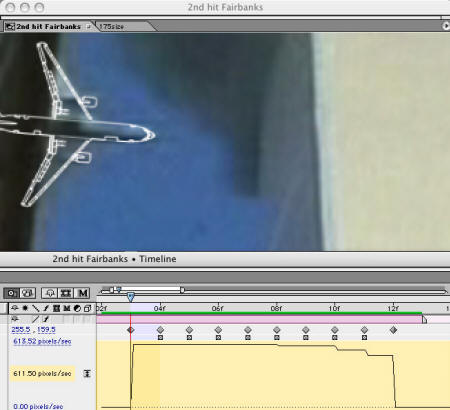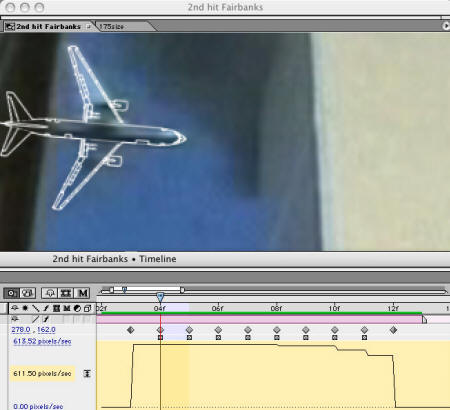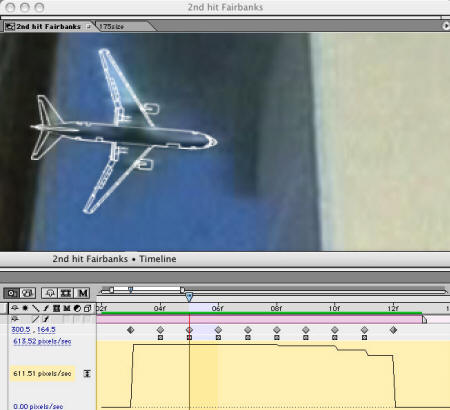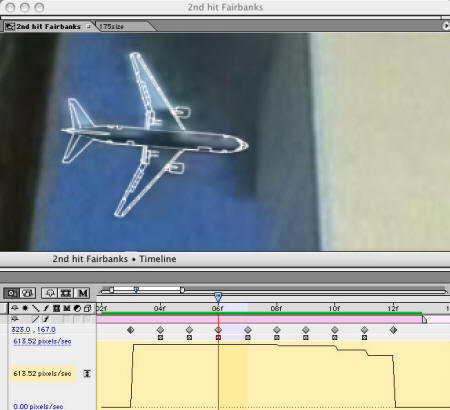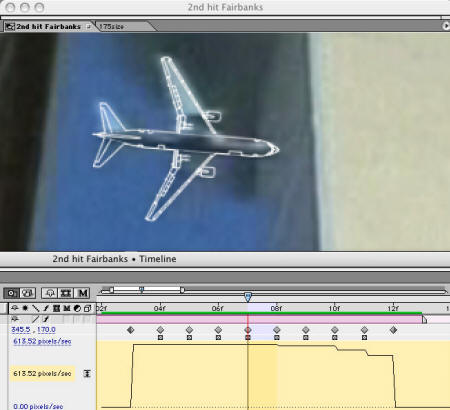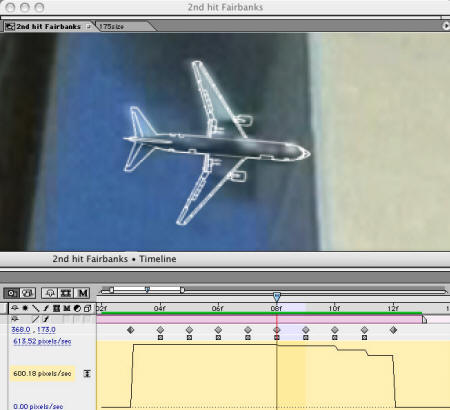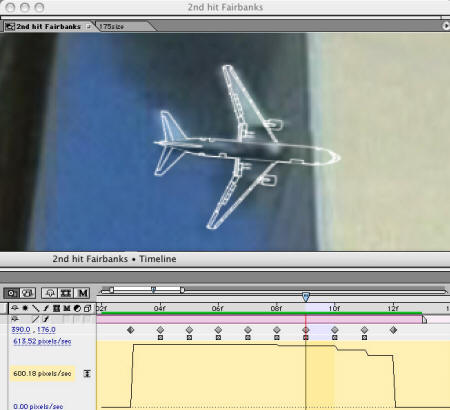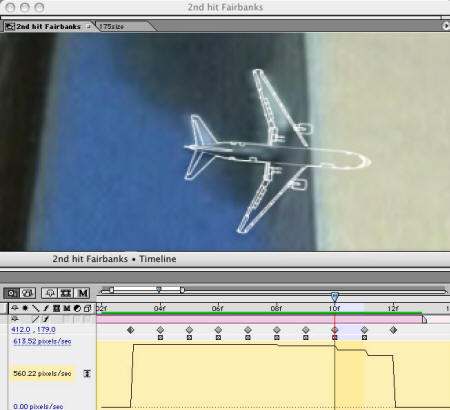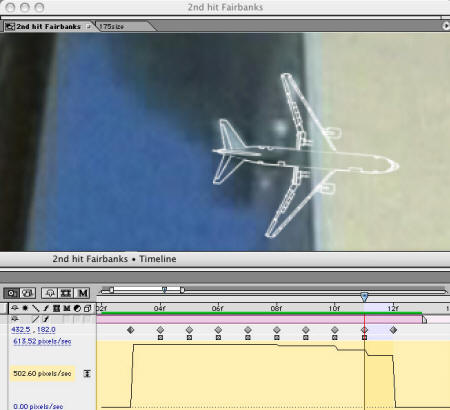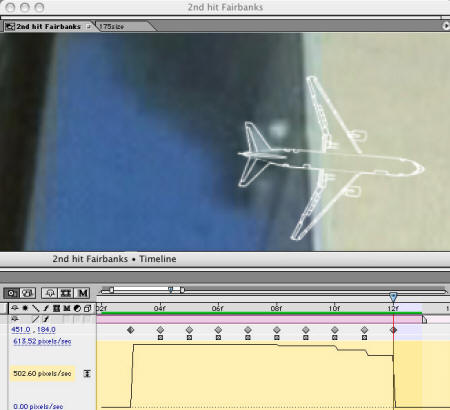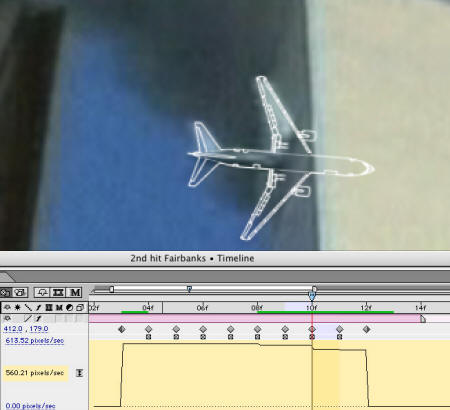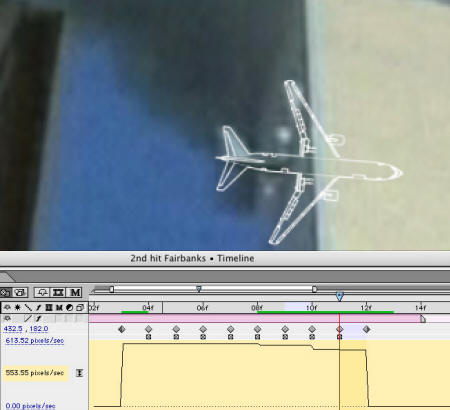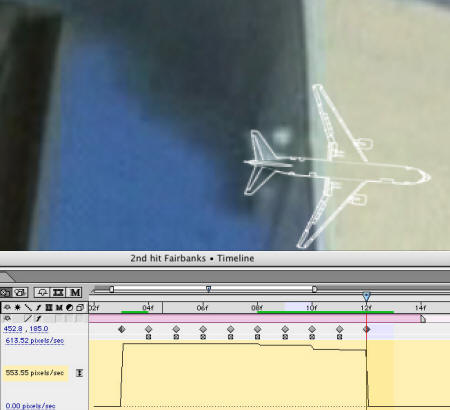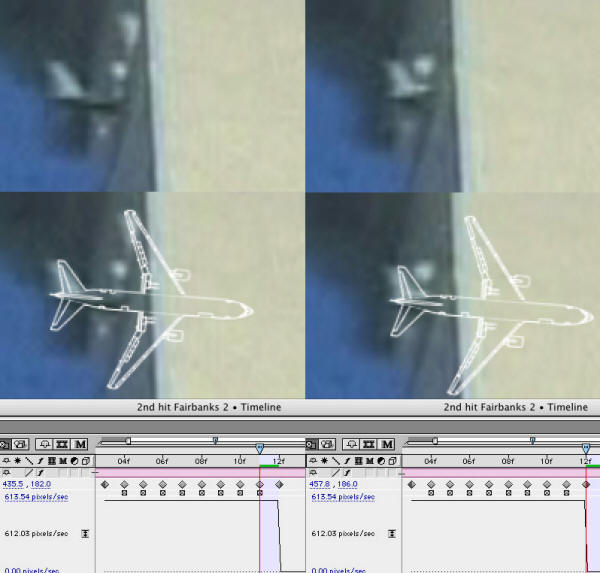|
October-November 2006 from QuestionsQuestions Website
By overlaying the 767 graphic over the plane the motion can be matched and any differences in speed of the actual plane will be reflected in the speed of the graphic overlay.
After Effects shows the
speed, in pixels per second, of a composited image in numeric and graphical
form (highlighted in yellow).
The kinetic energy of a moving object varies as the square of its speed. If an object doubles in speed, its kinetic energy quadruples. The inverse is also true: if an object loses half its speed, its kinetic energy is quartered.
Therefore, a loss of 25% of kinetic energy
translates into only about a 13% loss of speed, assuming that the loss of
kinetic energy is purely from reduction of speed and not also through the
deformation of the plane's material.
By the point of the last possible measurement,
when the tail is just outside the building, the speed has decreased to about
502 pixels per second. That means that the plane in the Fairbanks footage
lost about 18% of its speed, which is even greater than what Grossman
claimed should be visible.
But Rajter's treatment of this mistake seems to be deliberately misleading.
Here's what he says:
First of all, what he doesn't say that in the next to last frame, which is not misaligned, the plane has already experienced a deceleration of 8.5%!
(Note that because of the key-frame interpolation method used here in After Effects, the program I used to make this analysis, the speed value displayed is that of the next key-frame forward, so you have to read the speed value from one frame back).
Instead, he skips over this inconvenient fact and just
shows the last misplaced frame, in order to try to throw into question the
entire analysis. I'm really surprised he tried to get away with this
obfuscation. Or maybe I'm not surprised.
Hardly the falsified deceleration that Ratjer claims and still close to the
figure of a 13% reduction in speed derived from the MIT figure of a 25%
reduction of kinetic energy by the impact on the outer wall.
I never state that I used the wings when the plane is outside the building. This is an unsupported assumption made by Ratjer. In fact, the entire visible profile of the plane was used to align the diagram.
This probably should have been mentioned
originally, but I thought it was obvious. Far from being a major flaw, this
method compensates for a slightly blurred image by using every single point
possible, and finding the best fit overall. And it is perfectly clear
looking at my timeline that there is a very regular alignment of the plane
over the entire sequence except for the last frame.
The following graphic shows that for the speed to remain constant, the diagram must be moved ahead of the image of the plane: Ratjer's complaint that the wall of the WTC is moving in the Fairbanks footage is true:
The same
deceleration measurement is achieved with a stabilized version of the
Fairbanks footage.
Here's why: there is an interesting logical contradiction in the no-planer complaints about the lack of deceleration. Rajter says that the Fairbanks footage is suspicious because it was in the FBI's hands; a typical unsubstantiated no-planer allegation. Does he want us to assume that the Myers' footage that he uses is not suspicious? After all it shows a 767, so by his standards it too must be faked.
So why then does he think it's reliable?
Those behind 9/11 could have done whatever they wanted with faked videos, including leaving out deceleration - or any other phenomenon - in order to encourage the no-plane psy-op. This leads to the inevitable conclusion that any faked footage would have no evidentiary value whatsoever in demonstrating the absence of a 767 on 9/11.
Alleged anomalies would only be potential
evidence for faked video. The only legitimate visual evidence for no-planes
would be an actual no-plane video or photo showing something other than a
767. Of course, no such thing exists.
Therefore it's a mistake to measure all kinetic energy conversion by deceleration alone.
The same consideration should be made with the 767 impact, which leads to the possibility that more kinetic energy conversion happened then what can be measured by deceleration. So even if my measurements of the Fairbanks footage are incorrect and the deceleration was a smaller or even negligible figure, this would not by itself indicate an anomaly in the impact physics.
The same could be said for any analysis that
shows a small amount of deceleration, such as Rajter's. Thus, his claim that
the plane retained at least 96% of its KE after penetrating the outer wall
is not reliable at all and almost certainly overstated.
After all, only one of the dozens of 767 images needs to be authentic to utterly destroy the no-plane theory forever.
|
||||||||||||||||

